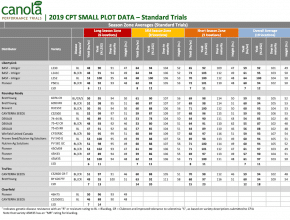Freezing tough or damp canola by running cold air through the bin can be a short-term storage solution for canola that couldn’t get dried before winter…but check that canola regularly. This is not as safe as you might think…
Canola Watch Posts
-
-
-
-
Western Canada still has a lot of canola acres to harvest. A similar situation occurred in 2016. The Canadian Grain Commission reported in 2017 on the quality of late-harvested and spring-harvested canola. Of the spring-harvested samples submitted, 60% graded No. 1 or 2…
-
-
-
Presentations from Canola Discovery Forum in Winnipeg in November are posted online here. Most presenters agreed to share PDFs of their slide decks…
-
Your consent will allow staff to monitor pests on your property and will contribute to the health of the agriculture industry in Saskatchewan…
-
The 2019 Canola Discovery Forum (CDF) will take place at the RBC Convention Centre in Winnipeg, Manitoba on November 13-14. This event is a unique opportunity for consensus building and dialogue between all canola industry stakeholders. The theme this year is Integrated Pest Management (IPM). REGISTRATION CLOSES on Wednesday, November 6…





